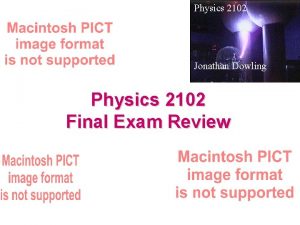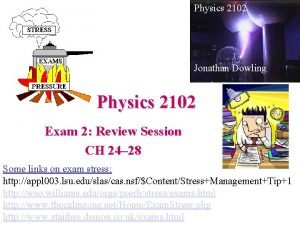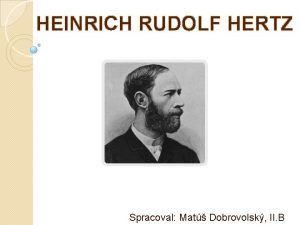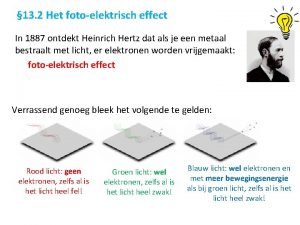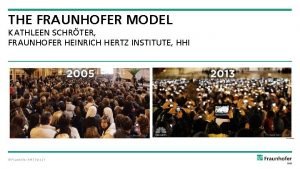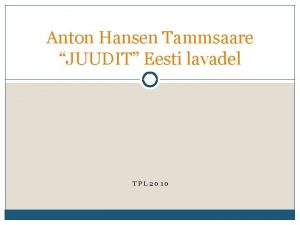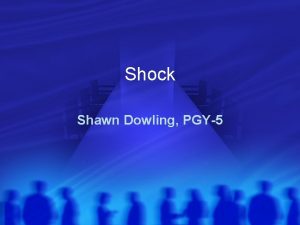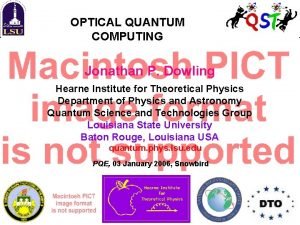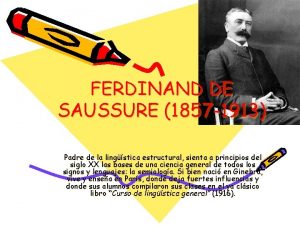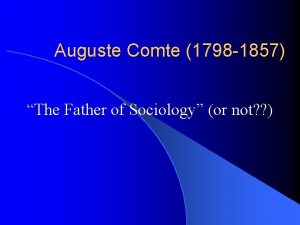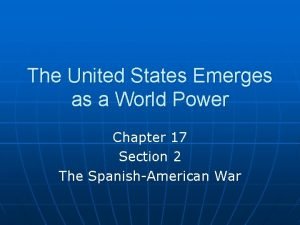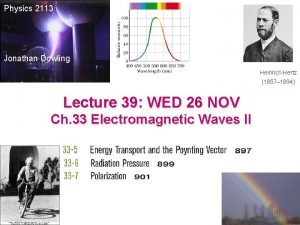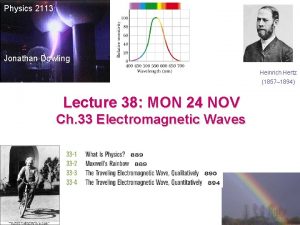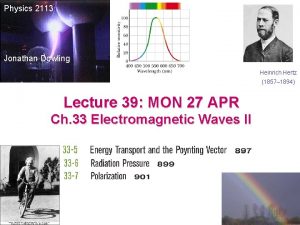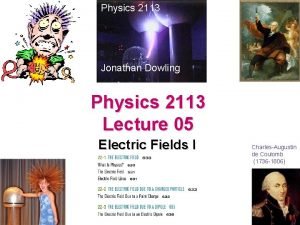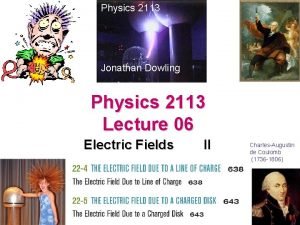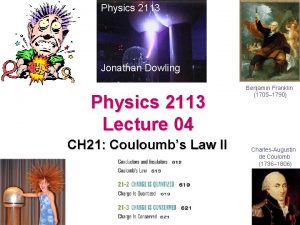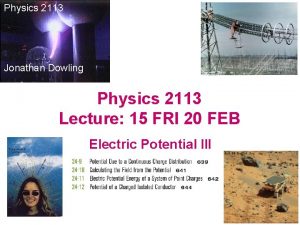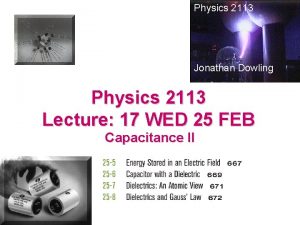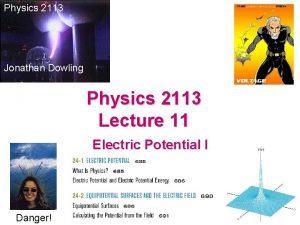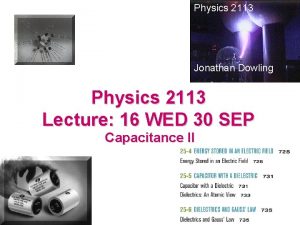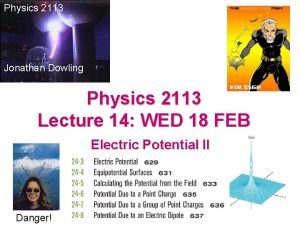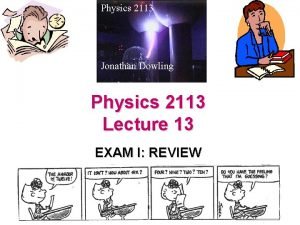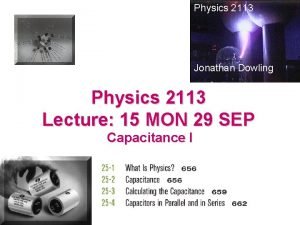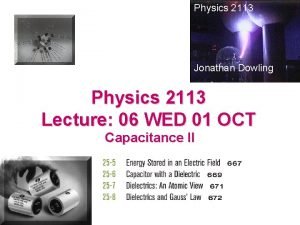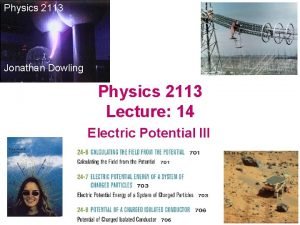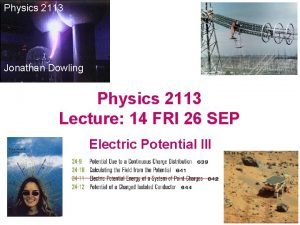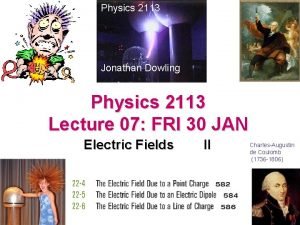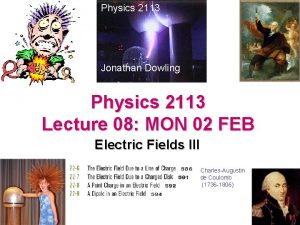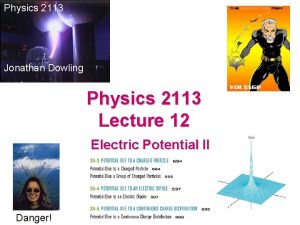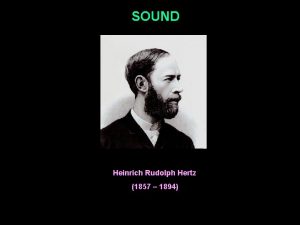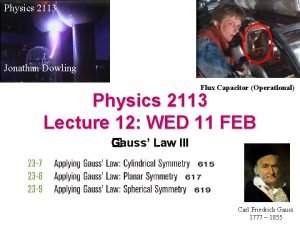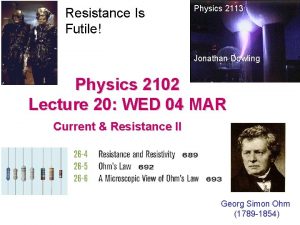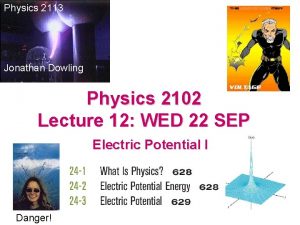Physics 2113 Jonathan Dowling Heinrich Hertz 1857 1894
























- Slides: 24

Physics 2113 Jonathan Dowling Heinrich Hertz (1857– 1894) Lecture 37: FRI 19 NOV Ch. 33 Electromagnetic Waves I

Maxwell Equations in Empty Space: Fields without sources? Changing E gives B. Changing B gives E.

Maxwell, Waves, and Light A solution to the Maxwell equations in empty space is a “traveling wave”… electric and magnetic fields can travel in EMPTY SPACE! The electric-magnetic waves travel at the speed of light? Light itself is a wave of electricity and magnetism!

Electromagnetic waves First person to prove that electromagnetic waves existed: Heinrich Hertz (1875 -1894) First person to use electromagnetic waves for communications: Guglielmo Marconi (1874 -1937), 1909 Nobel Prize (first transatlantic commercial wireless service, Nova Scotia, 1909)

Electromagnetic Waves A solution to Maxwell’s equations in free space: Visible light, infrared, ultraviolet, radio waves, X rays, Gamma rays are all electromagnetic waves.


33. 3: The Traveling Wave, Qualitatively: Figure 33 -4 shows how the electric field and the magnetic field change with time as one wavelength of the wave sweeps past the distant point P in the last figure; in each part of Fig. 33 -4, the wave is traveling directly out of the page. At a distant point, such as P, the curvature of the waves is small enough to neglect it. At such points, the wave is said to be a plane wave. Here are some key features regardless of how the waves are generated: 1. The electric and magnetic fields and are always perpendicular to the direction in which the wave is traveling. The wave is a transverse wave. 2. The electric field is always perpendicular to the magnetic field. 3. The cross product always gives the direction in which the wave travels. 4. The fields always vary sinusoidally. The fields vary with the same frequency and are in phase with each other.

Radio waves are reflected by the layer of the Earth’s atmosphere called the ionosphere. This allows for transmission between two points which are far from each other on the globe, despite the curvature of the earth. Marconi’s experiment discovered the ionosphere! Experts thought he was crazy and this would never work.

Electromagnetic Waves: One Velocity, Many Wavelengths! with frequencies measured in “Hertz” (cycles per second) and wavelength in meters. http: //imagers. gsfc. nasa. gov/ems/ http: //www. astro. uiuc. edu/~kaler/sow/spectra. html

33. 2: Maxwell’s Rainbow: Visible Spectrum:

Maxwell’s Rainbow The wavelength/frequency range in which electromagnetic (EM) waves (light) are visible is only a tiny fraction of the entire electromagnetic spectrum. Fig. 33 -2 Fig. 33 -1 (33 -2)

The Traveling Electromagnetic (EM) Wave, Qualitatively An LC oscillator causes currents to flow sinusoidally, which in turn produces oscillating electric and magnetic fields, which then propagate through space as EM waves. Next slide Fig. 33 -3 Oscillation Frequency: (33 -3)

33. 3: The Traveling Wave, Quantitatively: The dashed rectangle of dimensions dx and h in Fig. 33 -6 is fixed at point P on the x axis and in the xy plane. As the electromagnetic wave moves rightward past the rectangle, the magnetic flux B through the rectangle changes and— according to Faraday’s law of induction— induced electric fields appear throughout the region of the rectangle. We take E and E + d. E to be the induced fields along the two long sides of the rectangle. These induced electric fields are, in fact, the electrical component of the electromagnetic wave.

33. 4: The Traveling Wave, Quantitatively: Fig. 33 -7 The sinusoidal variation of the electric field through this rectangle, located (but not shown) at point P in Fig. 33 -5 b, E induces magnetic fields along the rectangle. The instant shown is that of Fig. 33 -6: is decreasing in magnitude, and the magnitude of the induced magnetic field is greater on the right side of the rectangle than on the left.

33. 4: The Traveling Wave, Quantitatively:

33. 3: The Traveling Wave, Qualitatively: We can write the electric and magnetic fields as sinusoidal functions of position x (along the path of the wave) and time t : Here Em and Bm are the amplitudes of the fields and, w and k are the angular frequency and angular wave number of the wave, respectively. The speed of the wave (in vacuum) is given by c. Its value is about 3. 0 x 108 m/s.



Mathematical Description of Traveling EM Waves Electric Field: Wave Speed: Magnetic Field: All EM waves travel a c in vacuum Wavenumber: EM Wave Simulation Angular frequency: Vacuum Permittivity: Vacuum Permeability: Fig. 33 -5 Amplitude Ratio: Magnitude Ratio: (33 -5)

The Poynting Vector: Points in Direction of Power Flow Electromagnetic waves are able to transport energy from transmitter to receiver (example: from the Sun to our skin). The power transported by the wave and its direction is quantified by the Poynting vector. John Henry Poynting (1852 -1914) For a wave, since E is perpendicular to B: Units: Watt/m 2 In a wave, the fields change with time. Therefore the Poynting vector changes too!! The direction is constant, but the magnitude changes from 0 to a maximum value.


EM Wave Intensity, Energy Density A better measure of the amount of energy in an EM wave is obtained by averaging the Poynting vector over one wave cycle. The resulting quantity is called intensity. Units are also Watts/m 2. The average of sin 2 over one cycle is ½: or, Both fields have the same energy density. The total EM energy density is then

Solar Energy The light from the sun has an intensity of about 1 k. W/m 2. What would be the total power incident on a roof of dimensions 8 m x 20 m ? I = 1 k. W/m 2 is power per unit area. P=IA=(103 W/m 2) x 8 m x 20 m=0. 16 Mega. Watt!! The solar panels shown (BP -275) has dimensions 47 in x 29 in. The incident power is then 880 W. The actual solar panel delivers 75 W (4. 45 A at 17 V): less than 10% efficiency…. The electric meter on a solar home runs backwards — Entergy Pays YOU!

 Jonathan dowling
Jonathan dowling Jonathan dowling
Jonathan dowling Heinrich rudolf hertz
Heinrich rudolf hertz Heinrich rudolf hertz
Heinrich rudolf hertz Uittree energie
Uittree energie Hertz
Hertz Art.2113 cc
Art.2113 cc Afi 36-2113
Afi 36-2113 Comp 2113
Comp 2113 11. testua. euskeldun batzokijaren estatutuak (1894)
11. testua. euskeldun batzokijaren estatutuak (1894) 1894 railroad strike
1894 railroad strike Dickson experimental sound film
Dickson experimental sound film Tammsaare juudit
Tammsaare juudit Dowling roundabout
Dowling roundabout Shock mnemonic
Shock mnemonic International human resource management dowling 6th edition
International human resource management dowling 6th edition Dowling optical
Dowling optical What is tebhaga movement
What is tebhaga movement Project on revolt of 1857
Project on revolt of 1857 Dred scott vs sandford what happened
Dred scott vs sandford what happened Indian rebellion of 1857 ap world
Indian rebellion of 1857 ap world Présentation
Présentation Padre de la lingüística
Padre de la lingüística Auguste comte (1798–1857)
Auguste comte (1798–1857) United states acquisitions and annexations 1857-1904
United states acquisitions and annexations 1857-1904
